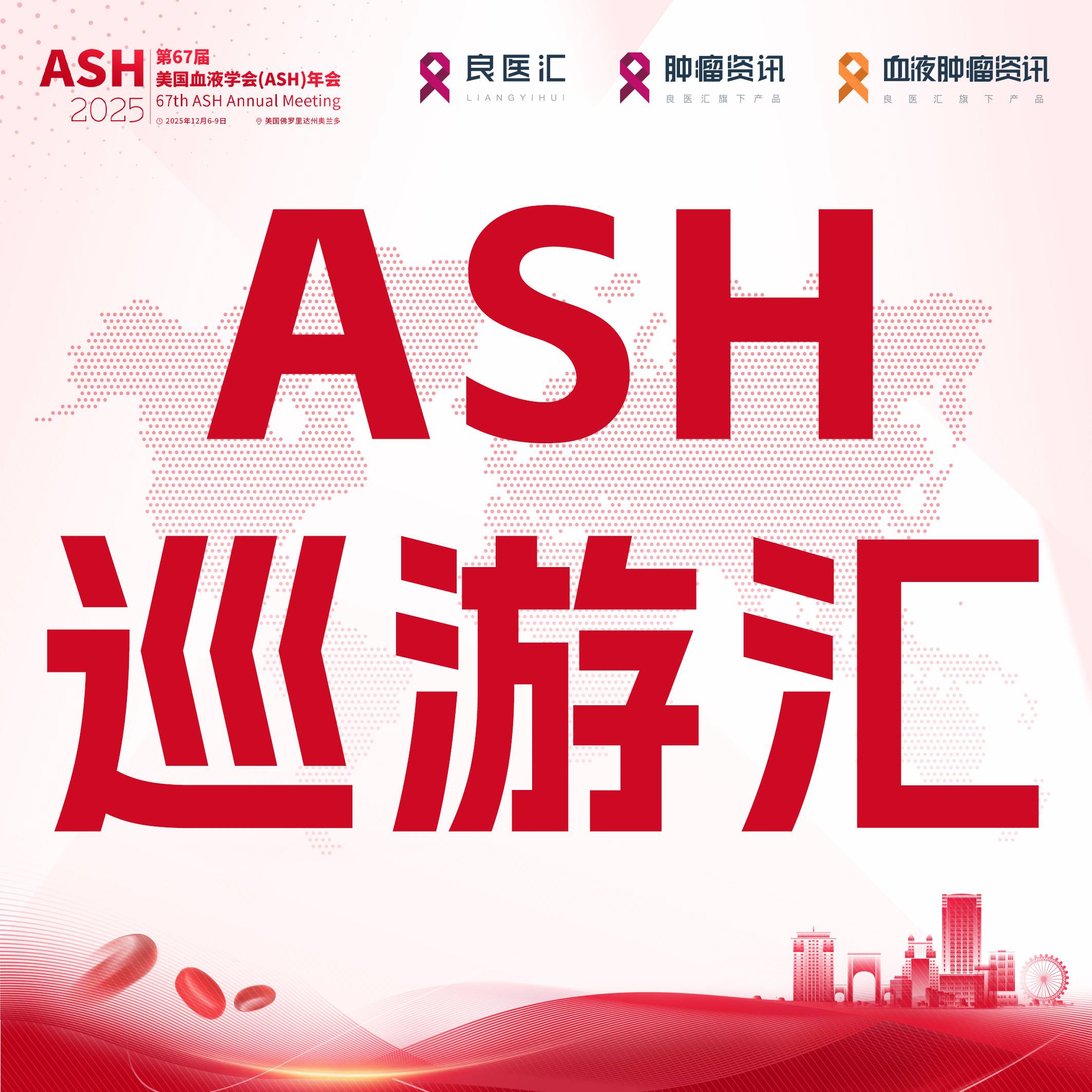乳腺癌是起源于乳腺上皮组织的恶性肿瘤,多学科会诊和治疗技术的发展使患者生存期逐年提高。美国国家癌症研究所数据显示,原位乳腺癌和局部乳腺癌患者五年生存率分别达到98.8%和85.7%,因此乳腺癌患者的远期并发症及生存质量逐渐引起大家关注。术后辅助放疗是乳腺癌综合治疗的重要手段之一,可降低局部复发率及死亡率[1-2]。但放射治疗带来的心脏和肺脏剂量与缺血性心脏病[3-4]、放射性肺炎[5]甚至肺癌[6]风险相关。尤其是左侧乳腺癌放疗后15年心血管疾病发生率和死亡率明显升高,成为影响患者长期生存的重要因素之一[7]。深吸气屏气(deep inspira-tion breath-hold, DIBH)是一类呼吸控制技术,能使胸廓扩张、心脏远离胸壁,减少照射野内心脏体积,从而降低心脏辐射剂量,以期减少放射性心脏损伤(radiation-induced hleart disease,RIHD)的发病率和死亡率。本综述对乳腺癌放疗的心脏毒性、放疗中心脏保护的方法、深吸气屏气技术的原理和优势、患者选择和培训、应用普及问题及研究展望概述如下。

王颖熠,邓小玉,党倩倩等.深吸气屏气在乳腺癌放射治疗中应用的研究进展[J].现代肿瘤医学,2024,32(07):1356-1360.
乳腺癌放疗导致心脏损伤
乳腺癌放疗的心脏毒性
RIHD是胸部或上腹部恶性肿瘤患者放射治疗时,心脏部分或全部受到照射导致的并发症,RIHID的发生风险与心脏接受的辐射剂量直接相关[8] 。绝大多数RIHD 发生在放疗结束后数月、数年甚至十数年,且损伤呈渐进式发展,急性期表现为心律失常、左室功能障碍、心包炎、心绞痛、充血性心力衰竭等,晚期可以出现心脏瓣膜病、 肌纤维化、 包积液、严重心力衰竭甚至死亡[9]。
乳腺癌治疗中蒽环类药物、曲妥珠单抗等的应用,也会增加患心包炎、深静脉血栓形成等心血管疾病的风险,该风险自确诊起持续多年并影响预后[10] 。放射治疗与蔥环类药物联合应用使充血性心力衰場的相对危险度增加2~6倍[11]。患缺血性心脏病的女性,再患乳腺癌的风险更高,二者互为危险因素[12] 。因此,我们应当更加关注乳腺癌患者放疗所致的心血管疾病风险。
减少乳腺癌放疗心脏剂量的技术
乳腺癌放疗过程中降低心脏放射剂量的方法有三类:①使心脏远离计划靶区:通过体位、呼吸控制或二者的结合,增加心脏与放疗目标之间的距离,从而减少心脏剂量[13-14]。常用方法为俯卧体位、DIBH等;②部分乳腺照射:从技术角度分为部分加速乳腺照射[15]和术中放射治疗[16],二者通过降低放疗目标体积减少心脏剂量;③现代放射治疗技术等:IMRT、VMRT、质子束放疗[17] 、射野角度的优化及多叶光栅准直器[18]等放疗技术使所需剂量精准投射到患者治疗靶区,最大限度的保护周围正常组织。锥形束CT(cone beam CT,CBCT)[19]、光学表面监测系统(optical surface moni-toring system,OSMS) [20]及 Exac -Trac 和alignRT[21]等图像引导技术的应用,能验证患者位置、提高摆位精度并保证每个治疗射野深吸气屏气的可重复性。
增加心脏与目标结构之间的距离、降低放射目标体积,用现代放疗技术。将上述几类技术结合使用[22-23] ,可以减少心脏的辐射剂量,同时确保对乳房或胸壁目标结构足够的剂量覆盖。
深吸气屏气技术
DIBH是一大类呼吸控制技术,根据实现方式分为计算机辅助DIBH和自由DIBH(voluntary deep inspiration breath hold,vDIBH)。其原理是在切线野放疗中,当于深吸气相时,患者胸廓扩张、横膈变平、肺组织扩张,通过增加心脏与左前胸壁的距离减少心脏的辐射剂量。
计算机辅助DIBH
计算机辅助DIBH包括采用主动呼吸调控系统(active breathing control,ABC)(医科达,瑞典)、实时位置管理(real-time position management, RPM1)系统(瓦里安,美国)、视听反馈设备[24]及OSMS等,本文主要介绍研究应用较多的ABC及RPM系统。
ABC系统是侵入性的呼吸控制系统。ABC系统通过带有活瓣的口罩或呼吸导管将患者的呼吸与主动呼吸控制装置连接,在平静呼吸时计算机显示肺体积的改变,操作者可主动控制患者呼吸于呼吸周期的某个预置时相,并在制动期进行定位或放疗[25] 。GIRAUD等开展的多中心临床试验根据剂量差异推断ABC技术可显著降低肺癌[26]、乳腺癌[27]放疗患者的肺、心脏和食道晚期毒性。RPM系统是非侵入性的,该系统监测放于患者体表的标记块的波动,RPM工作站将波动图像数字化并产生具有周期性的呼吸曲线,从而记录患者靶区的位置变化范围[28]。在治疗阶段,RPM系统与直线加速器配合,可控制直线加速器只在呼吸进行到某一指定相时出束。加州大学戴维斯癌症中心[29]首次报道了在放疗过程中利用RPM系统控制呼吸。近年来,RPM 系统逐渐应用于胸部及上腹部[30]肿瘤放射治疗中。
自由深吸气屏气
英国开展的HeartSpare多中心临床试验提出了vDIBH技术[31-33],该技术不需要额外设备辅助,要求患者先吸气和呼气两次,再深吸气并保持,在深吸气屏气相进行定位或疗。医生可以通过体表、体侧的皮肤标记及激光线来确定患者治疗前及治疗期间的屏气的一致性。vDIBH能保证其治疗的一致性及可重复性[34],且比计算机辅助的ABC系统[31]耗时更短、更易被医生及患者接受。
剂量研究及风险评估
危及器官及其亚单位剂量研究
放射损伤程度与危及器官接受的辐射剂量直接相关,乳腺癌放疗剂量与RIHD的发生存在线性关系[35]。DROST等[35]的研究系统回顾了2014年至2017年全球范围内的乳腺癌放疗剂量,左侧乳腺癌放疗的平均心脏剂量(mean heart dose,MHD)为3.6Gy,较之前TAYLOR等B报道的5.4Gy有所下降,这可能是由于技术进步及危及器官保护意识的提高。DROST等[36]还总结了呼吸控制对MHD的影响,与不采用呼吸控制(4.5 Gy)相比,采用呼吸控制的MHD(1.7Gy)显著降低。LAI等[37]荟萃分析了12项观察性研究的1019例患者(DIBH组576例,自由呼吸组443例),认为左侧乳腺癌术后放疗中采用DIBH可以在不影响靶区覆盖的同时减少心脏剂量、LAD剂量和左肺剂量。一些前瞻性研究显示[38-44],相比于自由呼吸(free breath,FB)相,左侧乳腺癌患者DIBH相的MHD、LAD及左肺剂量显著降低,且不影响靶区覆盖。如JAGSI等[43]的随机对照实验显示,DIBH组MHD为2.35Gy,FB组MHD为3.22 Gy。
早期的心脏剂量研究大都基于MHD开展,近年来许多研究也着眼于如冠状动脉左前降支(left anterior descending coronary artery,LAD)等冠脉结构及心脏亚单位的辐射剂量。HEISTUEN等[45]研究对比了FB及DIBH的危及器官剂量,MHD分别为6.2Gy和3.1Gy,DmeanLAD分别为25.0Gy和10.9 Gy。挪威的一项研究显示[46],相比于FB,使用DIBH的MHD降低了3.9 Gy,DmeanLAD降低幅度更大,为11.2 Gy。SCHRODER等[47]的最新研究显示,在使用DIBH时,MHD平均降低2.8 Gy, D cean LA)平均降低4.2 Gy。除心脏及LAD之外,PANDELI等[48]还发现使用DIBH可大幅降低右冠状动脉最大剂量( 平均降低 6 Gy) 。SONG 等[39]研究了更多冠脉结构剂量,发现相比于FB组,DIBH组MHD降低了1.5Gy,而LAD远端和左心室心尖区平均剂量降低更加显著,分别为14.4Gy和12.1Gy。
风险评估
虽然以上研究中MHD减少数值不大,但LAUGAARD等[4]最新的大样本研究显示,MHD增加1Gy,冠状动脉事件发生率相应增加19%,该结论相比DARBY等[3]认为的7.4%有所提高。JACOBSE等[49]研究认为,心肌梗死的风险随着MHD的增加而线性增加,其风险比为6.4%。虽然目前没有证据能证明危及器官(如心脏)的放射剂量低于某阅值,则RIHD风险不存在,但当MHD低于2Gy左右国RIHD的风险无法准确估计,因此不能排除存在闻值的可能性。目前尚无研究评估LAD放射剂量与晚期RIHD之间的关系,但LAD的解剖位置及其与靶区的关系使越来越多的研究关注LAD的辐射剂量[50] ,应当将LAD视为危及器官[51] ,在勾画靶区和放疗过程中尽量规避。
患者选择及培训
患者选择标准
由于患者胸部解剖因素(如胸廓形态、肺总容积等)存在个体差异,解剖因素的变化会影响患者接受的心肺剂量,因此并非所有乳腺癌辅助放疗患者均需使用DIBH技术。
现有研究建议有心脏病史(如心梗[40] 、心脏解剖结构不良[52])、低体质量指数(bodymlass inde, BMI)[53] 预后好[40]的左侧乳腺癌患者于放疗中应用DIBH技术。由于心脏解剖位置偏左,DIBH技术的既往研究多于左侧乳腺癌患者中开展,ROCHET等[54]的小样本研究认为,至少75%的左侧乳腺癌患者可因使用DIBH技术而减少心脏剂量,推荐在左侧乳腺癌患者放疗中常规使用该技术。当考虑到肝肺剂量时,如PANDELI等[48]提出,当右侧乳腺癌患者内乳淋巴结被照射时,使用DIBH技术可减少同侧肺及肝脏的辐射剂量。DELLORO等[55]提出具体措施,定位时于FB相和DIBH相分别给予两次低剂量CT平扫,根据危及器官照射剂量判断患者是否需要采用DIBH技术。
但上述研究并未提出明确的患者选择标准,且多数观点难以落实在具体患者的治疗中,因此使用DIBH技术的患者选择标准有待进一步研究。
患者培训
采用不同DIBH技术的患者培训方法各不相同,但普遍认为[19,56-57],应在CT扫描定位前训练患者掌握DIBH流程及注意事项,训练时间一般为15~45分钟。
ABC技术要求患者能够理解医生指导、接受口罩或呼吸导管装置以及屏气至少20秒[56]。VDIBH技术要求患者在每个治疗阶段重复深吸气、屏气,屏气时间通常为40~45秒[19],因此采用VDIBH技术的医生应更加注重患者培训及配合。
应用普及问题
采用ABC技术使治疗时间延长,包括治疗前安放装置的时间和治疗实施的时间。BARTLETT[31]等评估了使用ABC和VDIBH的再现性和对正常组织的保护,认为两种技术无显著差异,且vDIBH操作时间短,花费少。DUNKER-LEY[58]等的研究也认为应用两种技术的MHD无差异。由于ABC对心肺功能要求较高,有约20%[59-60]的患者中不能耐受ABC技术,故医生更倾向使用vDIBH技术。然而KAP-ANEN等[61]认为,应用vDIBH的剂量准确性与屏气次数有关,当需要照射乳房及锁骨上淋巴结时,全疗程所需屏气次数增多时,剂量误差相应增大。目前,vDIBH技术现仍局限于多中心临床试验阶段,惠及的患者有限,需要增加宣传及相关技术培训,使该技术尽快普及于临床。
研究展望
临床上常将几类减少心脏剂量的技术结合使用,常用的有IMRT、VMRT、乳腺补偿物、DIBH、俯卧位等。质子束放疗等设备及治疗昂贵,临床应用受限。然而,技术是否联用很大程度上取决于现有技术及设备而非临床标准,因此需要进一步的研究以确定DIBH与哪些技术联用,以最大限度保护心脏。此外,病人的依从性和选择标准也需要进一步研究,在确保疗效的同时避免纳人无法取得生存获益的患者。
由于放射剂量所致的RIHD显现要经历数年,迄今为止,DIBH技术应用于乳腺癌放(疗所产生的生存获益并没有明确结论,已有的多中心临床试验[27.30]局限于剂量研究。现有研究[39]认为单纯通过MHD减少来预测DIBH技术减少远期心脏毒性并不充分,可用危及器官的灌注或功能学指标预测晚期器官毒性[43] 已发表的DIBH的临床数据有限,缺乏高级别证据评估DIBH对晚期RIHD 或放射性心脏病发生概率的影响。虽然放射剂量与心脏毒性之间的关系已经明确[3],但缺少对于应用DIBH技术减少乳腺癌放疗后患者远期心脏毒性的大样本长期随访观察。
小结
现如今,科技进步推动肿瘤放射治疗向精准化迈进,提高放射精准度、减少危及器官剂量、降低并发症发生已然成为医患共同的需求和期待。乳腺癌放疗增加患心血管疾病的风险,RIHD的发生与心脏受辐射总剂量、分割剂量、受照射部位及体积有关[4,49] 。且放疗与具有心脏毒性的蔥环类药物、曲妥珠单抗等的联用可增加心血管疾病风险,因此对于需要胸部及上腹部放射治疗的患者,应采取现有手段尽可能减少其心脏剂量,并对患者心脏及冠脉系统功能定期随诊复查。
以DIBH为主的呼吸控制技术近年来应用于乳腺癌术后辅助放疗过程中,一方面可以减少呼吸运动引起的靶区位移,提高放射治疗精确度,从而提高局部控制率;另一方面可以减少放射野内心脏和肺体积,降低其照射剂量,减少放疗并发症发生,延长乳腺癌患者的生存期,改善生存质量。因该技术需要专业设备、医患配合,故而未在临床大规模使用但随着对于精准放疗的追求和对危及器官的重视,以DIBH技术为代表的呼吸控制技术将越来越多的应用于临床,精准放疗必将成为放射治疗的趋势。
[1] MCGALE P,TAYLOR C,CORREA C,et al. Effect of radiotherapy after mastectomy and axillary surgery on 10 - year recurrence and 20 - year breast cancer mortality: meta - analysis of individual patient data for 8135 women in 22 randomised trials[J]. The Lancet,2014,383( 9935) : 2127 - 2135.
[2] ORECCHIA R. Breast cancer: post - mastectomy radiotherapy reduces recurrence and mortality [J]. Nature Reviews Clinical Oncology,2014,11( 7) : 382 - 384.
[3] DARBY SC,EWERTZ M,MCGALE P,et al. Risk of ischemic heart disease in women after radiotherapy for breast cancer [J]. New England Journal of Medicine,2013,368( 11) : 987 - 998.
[4] LAUGAARD LORENZEN E,CHRISTIAN REHAMMAR J,JENSEN MB,et al. Radiation - induced risk of ischemic heart disease following breast cancer radiotherapy in Denmark,1977 - 2005 [J]. Radiotherapy and Oncology,2020,152: 103 - 110.
[5] GIURANNO L,IENT J,DE RUYSSCHER D,et al. Radiation - induced lung injury ( RILI) [J]. Frontiers in Oncology,2019,9:
877.
[6] HANANIA AN,MAINWARING W,GHEBRE YT,et al. Radiation - induced lung injury: Assessment and management [J]. Chest,2019,156( 1) : 150 - 162.
[7] WENNSTIG AK,WADSTEN C,GARMO H,et al. Long - term risk of ischemic heart disease after adjuvant radiotherapy in breast cancer: results from a large population - based cohort[J]. Breast Cancer Research,2020,22( 1) : 1 - 9.
[8] PORTALURI M,PETRUZZELLI MF,TRAMACERE F,et al. B - type natriuretic peptide plasma level in 5 - year breast cancer survivors after radiotherapy[J]. International Journal of Radiation Biology,2019,95( 2) : 201 - 206.
[9] SCHLITT A,JORDAN K,VORDERMARK D,et al. Cardiotoxicity and oncological treatments[J]. Deutsches Arzteblatt International,2014,111( 10) : 161.
[10] MATTHEWS AA,PEACOCK HINTON S,STANWAY S,et al. Risk of cardiovascular diseases among older breast cancer survivors in the united states: A matched cohort study [J]. Journal of the National Comprehensive Cancer Network,2021,19 ( 3) : 275 - 284.
[11] MULROONEY DA,YEAZEL MW,KAWASHIMA T,et al. Cardiac outcomes in a cohort of adult survivors of childhood and adolescent cancer: retrospective analysis of the childhood cancer survivor study cohort [J]. BMJ,2009,339: 1 - 11.
[12] MCGALE P,DARBY SC,HALL P,et al. Incidence of heart disease in 35,000 women treated with radiotherapy for breast cancer in Denmark and Sweden [J]. Radiotherapy and Oncology,2011,100( 2) : 167 - 175.
[13] MULLIEZ T,VELDEMAN L,SPELEERS B,et al. Heart dose reduction by prone deep inspiration breath hold in left - sided breast irradiation [J]. Radiotherapy and Oncology,2015,114( 1) : 79 - 84.
[14] MULLIEZ T,VAN DE VELDE J,VELDEMAN L,et al. Deep inspiration breath hold in the prone position retracts the heart from the breast and internal mammary lymph node region [J]. Radiotherapy and Oncology,2015,117( 3) : 473 - 476.
[15] WITT JS,GAO RW,SUDMEIER LJ,et al. Low cardiac and left anterior descending coronary artery dose achieved with left - sided multicatheter interstitial - accelerated partial breast irradiation [J]. Brachytherapy,2019,18( 1) : 50 - 56.
[16] FENG K,MENG X,LIU J,et al. Update on intraoperative radiotherapy for early - stage breast cancer [J]. American Journal of Cancer Research,2020,10( 7) : 2032 - 2042.
[17] PATEL SA,LU HM,NYAMWANDA JA,et al. Postmastectomy radiation therapy technique and cardiopulmonary sparing: A dosimetric comparative analysis between photons and protons with free breathing versus deep inspiration breath hold[J]. Practical Radiation Oncology,2017,7( 6) : e377 - e384.
[18] BARTLETT FR,YARNOLD JR,DONOVAN EM,et al. Multileaf collimation cardiac shielding in breast radiotherapy: Cardiac doses are reduced,but at what cost[J]. Clinical Oncology,2013,25 ( 12) : 690 - 696.
[19] BORST GR,SONKE JJ,DEN HOLLANDER S,et al. Clinical results of image - guided deep inspiration breath hold breast irradiation [J]. International Journal of Radiation Oncology Biology Physics,2010,78( 5) : 1345 - 1351.
[20] ZHANG W,LI R,YOU D,et al. Dosimetry and feasibility studies of volumetric modulated arc therapy with deep inspiration breath - hold using optical surface management system for left - sided breast cancer patients[J]. Frontiers in Oncology,2020,10: 1711.
[21] GONZALEZ - SANCHIS A,BRUALLA - GONZALEZ L,FUSTER - DIANA C,et al. Surface - guided radiation therapy for breast cancer: more precise positioning [J]. Clinical and Translational Oncology,2021,23( 10) : 2120 - 2126.
[22] KIRBY AM,EVANS PM,DONOVAN EM,et al. Prone versus supine positioning for whole and partial - breast radiotherapy: a comparison of non - target tissue dosimetry [J]. Radiotherapy and Oncology,2010,96( 2) : 178 - 184.
[23] ESSERS M,OSMAN SOS,HOL S,et al. Accelerated partial breast irradiation ( APBI) : are breath - hold and volumetric radiation therapy techniques useful[J]. Acta Oncologica,2014,53( 6) :794.
[24] CERVINO LI,GUPTA S,ROSE MA,et al. Using surface imaging and visual coaching to improve the reproducibility and stability of deep - inspiration breath hold for left - breast - cancer radiotherapy [J]. Physics in Medicine & Biology,2009,54 ( 22) : 6853 - 6865.
[25] WONG JW,SHARPE MB,JAFFRAY DA,et al. The use of active breathing control ( ABC) to reduce margin for breathing motion [J]. International Journal of Radiation Oncology Biology Physics,1999,44( 4) : 911 - 919.
[26] GIRAUD P,MORVAN E,CLAUDE L,et al. Respiratory gating techniques for optimization of lung cancer radiotherapy[J]. Journal of Thoracic Oncology,2011,6( 12) : 2058 - 2068.
[27] GIRAUD P,DJADI - PRAT J,MORELLE M,et al. Contribution of respiratory gating techniques for optimization of breast cancer radiotherapy [J]. Cancer Investigation,2012,30( 4) : 323 - 330.
[28] VIKSTROM J,HJELSTUEN MHB,MJAALAND I,et al. Cardiac and pulmonary dose reduction for tangentially irradiated breast cancer,utilizing deep inspiration breath - hold with audio - visual guidance,without compromising target coverage [J]. Acta Oncologica,2011,50( 1) : 42 - 50.
[29] KUBO HD,LEN PM,MINOHARA S,et al. Breathing - synchronized radiotherapy program at the university of California davis cancer center [J]. Medical Physics,2000,27( 2) : 346 - 353.
[30] OH SA,YEA JW,KIM SK,et al. Optimal gating window for respiratory - gated radiotherapy with real - time position management and respiration guiding system for liver cancer treatment [J]. Scientific Reports,2019,9( 1) : 4384.
[31] BARTLETT FR,COLGAN RM,CARR K,et al. The UK heartSpare study: randomised evaluation of voluntary deep - inspiratory breath - hold in women undergoing breast radiotherapy [J]. Radiotherapy and Oncology,2013,108( 2) : 242 - 247.
[32] BARTLETT FR,COLGAN RM,DONOVAN EM,et al. The UK heartSpare study ( stage Ib ) : randomised comparison of a voluntary breath - hold technique and prone radiotherapy after breast conserving surgery [J]. Radiotherapy and Oncology,2015,114 ( 1) : 66 - 72.
[33] BARTLETT FR,DONOVAN EM,MCNAIR HA,et al. The UK heartSpare study ( stage II) : Multicentre evaluation of a voluntary breath - hold technique in patients receiving breast radiotherapy [J]. Clinical Oncology,2017,29( 3) : e51 - e56.
[34] AL - HAMMADI N,CAPARROTTI P,NAIM C,et al. Voluntary deep inspiration breath - hold reduces the heart dose without compromising the target volume coverage during radiotherapy for left - sided breast cancer [J]. Radiology and Oncology,2018,52 ( 1) : 112 - 120.
[35] DROST L,YEE C,LAM H,et al. A systematic review of heart dose in breast radiotherapy [J]. Clinical Breast Cancer,2018,18 ( 5) : e819 - e824.
[36] TAYLOR CW,WANG Z,MACAULAY E,et al. Exposure of the heart in breast cancer radiation therapy: A systematic review of heart doses published during 2003 to 2013 [J]. International Journal of Radiation Oncology Biology Physics,2015,93( 4) : 845 - 853.
[37] LAI J,HU S,LUO Y,et al. Meta - analysis of deep inspiration breath hold ( DIBH) versus free breathing ( FB) in postoperative radiotherapy for left - side breast cancer [J]. Breast Cancer,2020,27( 2) : 299 - 307.
[38] CHI F,WU S,ZHOU J,et al. Dosimetric comparison of moderate deep inspiration breath - hold and free - breathing intensity - modulated radiotherapy for left - sided breast cancer[J]. Cancer/Radiothérapie,2015,19( 3) : 180 - 186.
[39] SONG J,TANG T,CAUDRELIER JM,et al. Dose - sparing effect of deep inspiration breath hold technique on coronary artery and left ventricle segments in treatment of breast cancer [J]. Radiotherapy and Oncology,2021,154: 101 - 109.
[40] SIMONETTO C,EIDEMULLER M,GAASCH A,et al. Does deep inspiration breath - hold prolong life? Individual risk estimates of ischaemic heart disease after breast cancer radiotherapy [J]. Radiotherapy and Oncology,2019,131: 202 - 207.
[41] HEPP R,AMMERPOHL M,MORGENSTERN C,et al. Deep inspiration breath - hold ( DIBH) radiotherapy in left - sided breast cancer: Dosimetrical comparison and clinical feasibility in 20 patients[J]. Strahlentherapie and Onkologie,2015,191( 9) : 710 - 716.
[42] LEE HY,CHANG JS,LEE IJ,et al. The deep inspiration breath hold technique using abches reduces cardiac dose in patients undergoing left - sided breast irradiation [J]. Radiation Oncology Journal,2013,31( 4) : 239 - 246.
[43] JAGSI R,GRIFFITH KA,MORAN JM,et al. A randomized comparison of radiation therapy techniques in the management of node - positive breast cancer: Primary outcomes analysis [J]. International Journal of Radiation Oncology Biology Physics,2018,101 ( 5) : 1149 - 1158.
[44] MAST ME,VAN KEMPEN-HARTEVELD L,HEIJENBROK MW,et al. Left - sided breast cancer radiotherapy with and without breath - hold: does IMRT reduce the cardiac dose even further [J]. Radiotherapy and Oncology,2013,108( 2) : 248 - 253.
[45] HJELSTUEN MHB,MJAALAND I,VIKSTROM J,et al. Radiation during deep inspiration allows loco - regional treatment of left breast and axillary - ,supraclavicular - and internal mammary lymph nodes without compromising target coverage or dose restrictions to organs at risk [J]. Acta Oncologica,2012,51( 3) : 333 - 344.
[46] VIKSTROM J,HJELSTUEN MH,WASBØ E,et al. A comparison of conventional and dynamic radiotherapy planning techniques for early - stage breast cancer utilizing deep inspiration breath - hold [J]. Acta Oncologica,2018,57( 10) : 1325 - 1330.
[47] SCHRODER C,KIRSCHKE S,BLANK E,et al. Deep inspiration breath - hold for patients with left - sided breast cancer - A one - fits - all approach? A prospective analysis of patient selection using dosimetrical and practical aspects [J]. The British Journal of Radiology,2022,95( 1135) : 20210295.
[48] PANDELI C,SMYTH L ML,DAVID S,et al. Dose reduction to organs at risk with deep - inspiration breath - hold during right breast radiotherapy: a treatment planning study [J]. Radiation Oncology,2019,14( 1) : 223.
[49] JACOBSE JN,DUANE FK,BOEKEL NB,et al. Radiation dose - response for risk of myocardial infarction in breast cancer survivors [J]. International Journal of Radiation Oncology Biology Physics,2019,103( 3) : 595 - 604.
[50] PIROTH MD,BAUMANN R,BUDACH W,et al. Heart toxicity from breast cancer radiotherapy: Current findings,assessment,and prevention[J]. Strahlentherapie Und Onkologie,2019,195( 1) : 1 - 12.
[51] TAN W,LIU D,XUE C,et al. Anterior myocardial territory may replace the heart as organ at risk in intensity - modulated radiotherapy for left - sided breast cancer [J]. International Journal of Radiation Oncology Biology Physics,2012,82( 5) : 1689 - 1697.
[52] WANG W,PURDIE TG,RAHMAN M,et al. Rapid automated treatment planning process to select breast cancer patients for active breathing control to achieve cardiac dose reduction[J]. International Journal of Radiation Oncology Biology Physics,2012,82( 1) : 386 - 393.
[53] YAMAUCHI R,MIZUNO N,ITAZAWA T,et al. Dosimetric evaluation of deep inspiration breath hold for left - sided breast cancer: Analysis of patient - specific parameters related to heart dose reduction [J]. Journal of Radiation Research,2020,61 ( 3) : 447 - 456.
[54] ROCHET N,DRAKE JI,HARRINGTON K,et al. Deep inspiration breath - hold technique in left - sided breast cancer radiation therapy: Evaluating cardiac contact distance as a predictor of cardiac exposure for patient selection[J]. Practical Radiation Oncology,2015,5( 3) : e127 - e134.
[55] DELL'ORO M,GILES E,SHARKEY A,et al. A retrospective dosimetric study of radiotherapy patients with left - sided breast cancer,patient selection criteria for deep inspiration breath hold technique [J]. Cancers ( Basel) ,2019,11( 2) : 259.
[56] COMSA D,BARNETT E,LE K,et al. Introduction of moderate deep inspiration breath hold for radiation therapy of left breast:
Initial experience of a regional cancer center[J]. Practical Radiation Oncology,2014,4( 5) : 298 - 305.
[57] BRUZZANITI V,ABATE A,PINNARO P,et al. Dosimetric and clinical advantages of deep inspiration breath - hold ( DIBH) during radiotherapy of breast cancer[J]. Journal of Experimental & Clinical Cancer Research,2013,32( 1) : 88.
[58] DUNKERLEY N,BARTLETT FR,KIRBY AM,et al. Mean heart dose variation over a course of breath - holding breast cancer radiotherapy [J]. The British Journal of Radiology,2016,89 ( 1067) : 20160536.
[59] ELDREDGE - HINDY H,LOCKAMY V,CRAWFORD A,et al. Active breathing coordinator reduces radiation dose to the heart and preserves local control in patients with left breast cancer: Report of a prospective trial [J]. Practical Radiation Oncology,2015,5( 1) : 4 - 10.
[60] ELDREDGE - HINDY HB,DUFFY D,YAMOAH K,et al. Modeled risk of ischemic heart disease following left breast irradiation with deep inspiration breath hold[J]. Practical Radiation Oncology,2015,5( 3) : 162 - 168.
[61] KAPANEN M,LAAKSOMAA M,PEHKONEN J,et al. Effects of multiple breath hold reproducibility on treatment localization and dosimetric accuracy in radiotherapy of left - sided breast cancer with voluntary deep inspiration breath hold technique [J]. Medical Dosimetry,2017,42( 3) : 177 - 184.











 苏公网安备32059002004080号
苏公网安备32059002004080号


